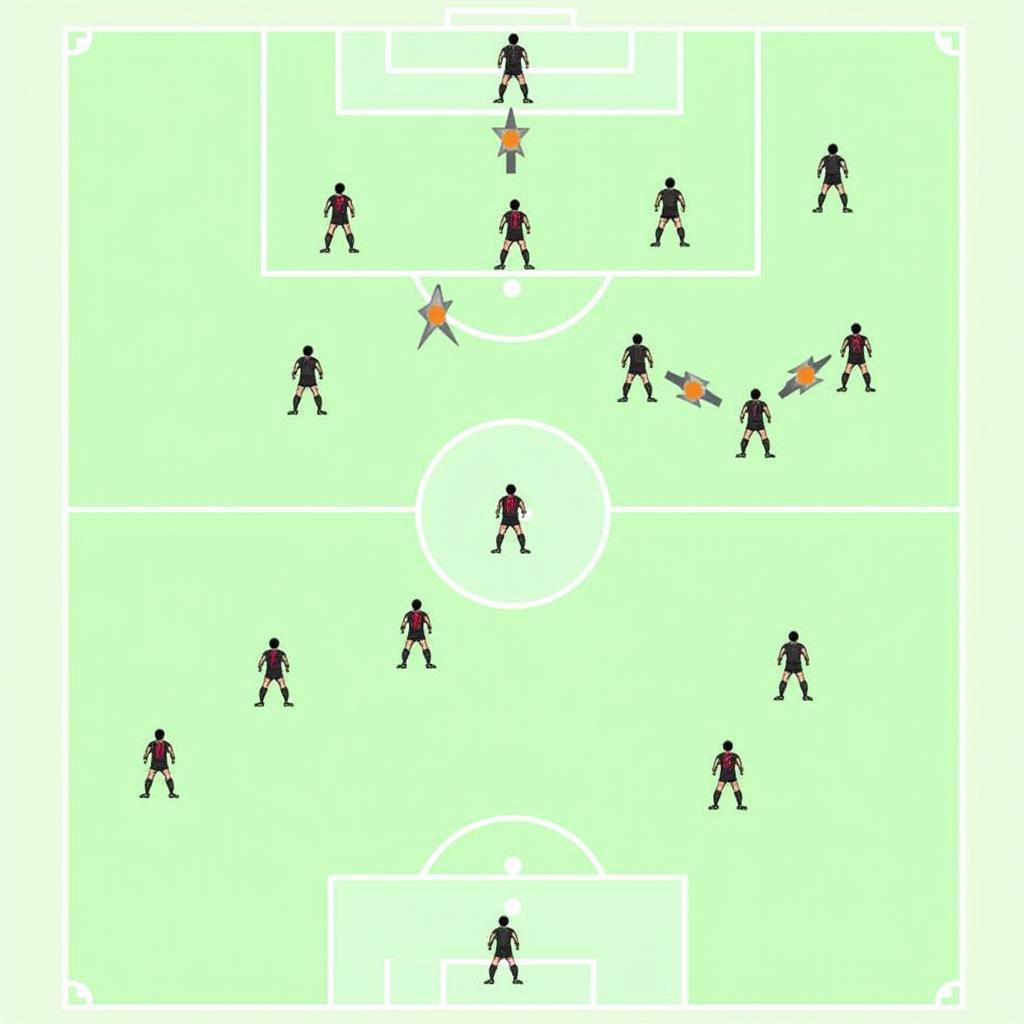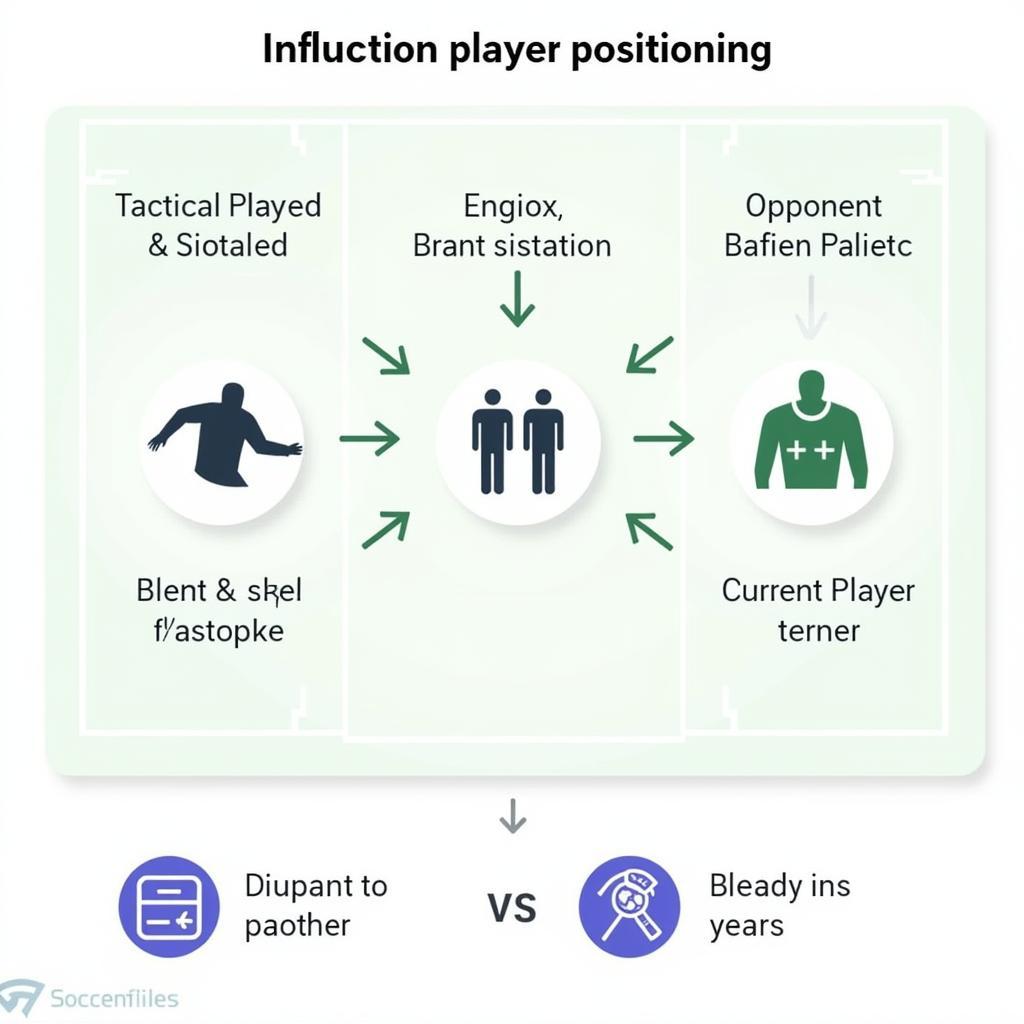Understanding Soccer Player Positions on the Field
October 19, 2024As a striker who thrives on finding space and exploiting weaknesses in the defensive line, I know how crucial the positioning of every player on the field is for a team’s success. It’s like a carefully choreographed dance, where each player’s movements influence and depend on the others. Understanding the roles and responsibilities associated with each position is key for both players and fans alike.
Let’s break down the different positions on a soccer field and their significance in the beautiful game.
Common Soccer Formations and Player Roles
The arrangement of players on the field is known as a formation. While there are countless variations, some of the most common formations include:
- 4-4-2: A classic formation with a balanced approach, employing four defenders, four midfielders, and two forwards.
- 4-3-3: A more attack-minded formation, often featuring wingers who provide width and create scoring opportunities.
- 3-5-2: A formation that emphasizes midfield dominance with three central defenders and five midfielders.
Within these formations, players take on specific roles:
Defenders
The backbone of the team, defenders are primarily responsible for preventing the opposition from scoring.
- Center Backs: The heart of the defense, they provide strength, aerial prowess, and tactical awareness to thwart attacks.
- Full Backs: Positioned on either flank, they need to be strong defensively while contributing to attacking moves down the wings.
Midfielders
Midfielders are the engine room, linking defense and attack while controlling the tempo of the game.
- Defensive Midfielders: Shielding the defense, they break up opposition attacks and initiate their team’s offensive plays.
- Central Midfielders: Dictating play from the middle, they possess excellent passing range, vision, and game intelligence.
- Attacking Midfielders: Operating closer to the opposition goal, they are creative playmakers who provide assists and score goals.
- Wingers: Utilizing speed and skill on the flanks, they stretch the opposition’s defense, deliver crosses, and create scoring chances.
Forwards
The goal scorers, forwards are tasked with finding the back of the net.
- Strikers: Leading the attack, they need to be clinical finishers with a knack for finding space in the penalty area.
 Soccer Formations: 4-4-2, 4-3-3, 3-5-2
Soccer Formations: 4-4-2, 4-3-3, 3-5-2
The Importance of Teamwork and Adaptability
While individual brilliance can be mesmerizing, soccer is ultimately a team sport. Players need to work together seamlessly, understanding their teammates’ movements and anticipating the flow of the game.
“A team’s success depends on its ability to adapt to different opponents and situations,” says Roberto Mancini, former manager of Italy’s national team. “Understanding player positioning and roles is crucial for implementing effective tactical strategies.”
Factors Influencing Player Positioning
A team’s formation and player positioning can be influenced by several factors:
- Opposition’s Strengths and Weaknesses: Teams often adapt their formation to exploit the opposition’s weaknesses and neutralize their strengths.
- Game Situation: The score, time remaining, and game context can all dictate positional changes. For instance, a team trailing in the final minutes might push more players forward in search of an equalizer.
- Player Attributes: A coach will consider the strengths and weaknesses of their players when deciding on a formation.
 Factors Influencing Player Positioning in Soccer
Factors Influencing Player Positioning in Soccer
Conclusion
Understanding soccer player positions is fundamental to appreciating the tactical intricacies of the game. From the defensive solidity of center backs to the attacking flair of strikers, each position contributes uniquely to the team’s performance.
Want to delve deeper into specific player roles or tactical analysis? Check out our articles on Player Statistics and Attacking Trends in Football.
Remember, soccer is a fluid and dynamic sport, where adaptability and teamwork are paramount. By grasping the fundamentals of player positioning, you’ll be well on your way to a deeper understanding and greater enjoyment of the beautiful game.